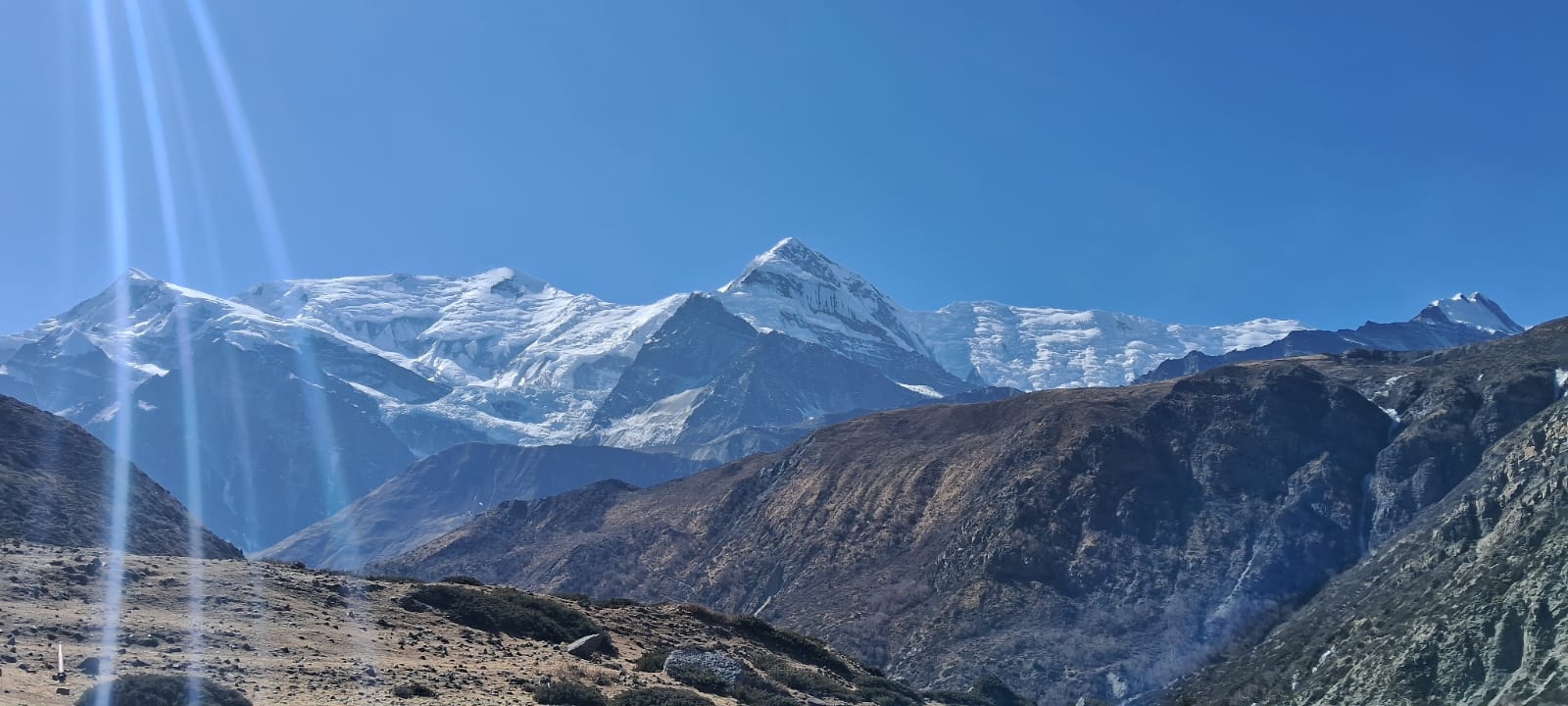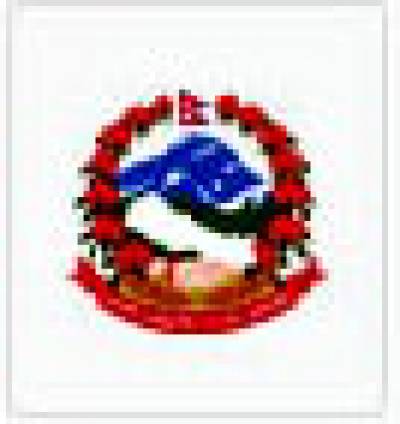ANNAPURNA CIRCUIT TREK 12 DAYS FROM POKHARA
The Annapurna Circuit Trek 12 Days from Pokhara offers an exceptional opportunity to explore the stunning landscapes and diverse cultures of Nepal. This trek is designed by Sherpa Expedition and Trekking to provide trekkers with a rewarding and challenging journey through the majestic Annapurna region.
The trek begins with a drive from Pokhara to Besisahar, followed by a local shared jeep ride to Jagat. From here, you embark on your first day of trekking to Dharapani, a scenic village nestled in the hills. The path takes you through dense forests and picturesque settlements, giving you a glimpse of the life in the Himalayas. You will continue your journey, trekking to Chame, where you can enjoy breathtaking views of the surrounding mountains, including Pisang Peak.
On Day 3, the trek takes you to Upper Pisang, a spot known for its panoramic views of Annapurna II and Pisang Peak. As you ascend further, you pass through the charming village of Ngawal, eventually reaching Manang. This is where you will have a full rest day to acclimatize and explore the area, including the opportunity to hike to the Ice Lake or Lama Cave, which helps in adjusting to the higher altitudes.
After acclimatization, you trek to Yak Kharka and Thorong Phedi, the base camp for crossing the Thorong La Pass (5,416m). The trek to Muktinath via the pass is an unforgettable experience, offering stunning views of the high Himalayan peaks. Upon reaching Muktinath, you will relax and take in the spiritual atmosphere of this sacred pilgrimage site.
The next few days are focused on descending from the high altitudes. A drive to Tatopani, known for its relaxing hot springs, gives you the chance to rejuvenate your body. You will then trek to Ghorepani, followed by a sunrise hike to Poon Hill, one of the best viewpoints in the Annapurna region. The trek concludes with a final descent to Nayapul, from where you drive back to Pokhara, bringing the 12-day journey to a close.
This trek offers a fantastic combination of adventure, culture, and natural beauty, making it a once-in-a-lifetime experience for trekkers.
ITINERARY
Day 1 : Drive from Pokhara to Jagat (1,300m) - Duration: 8-9 hours.
The adventure begins with a scenic drive from Pokhara to Jagat. You will travel through rural villages, winding roads, and lush landscapes, including the picturesque Marshyangdi River. After a long journey, you’ll reach Jagat, a small but charming village, where you’ll rest and prepare for the trek ahead.
Day 2 : Trek from Jagat to Dharapani (1,960m) - Duration: 8-9 hours.
On your second day, you’ll begin your trek from Jagat. As you ascend, the trail will lead you through beautiful terraced fields and forests of rhododendron and pine trees. After several hours of trekking, you’ll reach Dharapani, a village nestled at the confluence of two rivers. The scenery along the way is stunning, offering views of snow-capped peaks and picturesque hamlets.
Day 3 : Trek from Dharapani to Chame (2,760m) - Duration: 5-6 hours.
Today’s trek takes you from Dharapani to Chame, the district headquarters of Manang. As you trek, the landscape shifts, and the views of the Manaslu and Annapurna ranges become more dramatic. The path takes you through lush forests, traditional villages, and along the Marshyangdi River. Upon reaching Chame, you’ll be greeted with stunning views of the towering mountains and the opportunity to relax.
Day 4 : Trek from Chame to Upper Pisang (3,300m) - Duration: 5-6 hours.
On this day, you’ll trek from Chame to Upper Pisang, passing through dense forests and narrow canyons. The route is steep but offers incredible views of the Himalayas. As you ascend, you will get closer to the Pisang Peak, offering beautiful panoramic views. Upper Pisang is a quiet village, and it is an excellent spot for a rest and reflection.
Day 5 : Trek from Pisang to Manang (3,500m) via Ngawal Village - Duration: 8-9 hours.
Today’s trek takes you to Manang via Ngawal Village. The trail is longer but offers spectacular views of the surrounding peaks, including Gangapurna and Annapurna III. Along the way, you’ll pass through Ngawal, a traditional village where you can experience the Tibetan culture of the region. Manang itself is a larger village that serves as a great base for acclimatization before heading higher into the mountains.
Day 6 : Rest Day at Manang for Acclimatization.
This is a crucial rest day to allow your body to adjust to the high altitude of Manang. You can spend the day relaxing and exploring the village or take a short hike to Lama Cave or Ice Lake, which offers beautiful views of the Annapurna Range. Proper acclimatization is key to avoiding altitude sickness, so make sure to take it easy.
Day 7 : Trek from Manang to Yak Kharka (4,200m) - Duration: 4-5 hours.
After your rest day, you’ll continue your trek toward Yak Kharka, a small village located at 4,200 meters. The trail is relatively short, but it’s important to stay mindful of the altitude. You’ll pass through juniper forests and barren landscapes, with the scenery becoming more desolate as you approach the higher altitudes. Yak Kharka offers stunning views and is a peaceful spot for overnight rest.
Day 8 : Trek from Yak Kharka to Thorong Phedi (4,600m) - Duration: 3-4 hours.
The trek from Yak Kharka to Thorong Phedi is relatively short, but it’s an essential stop before the crossing of the Thorong La Pass the next day. Thorong Phedi sits at an elevation of 4,600 meters, and the surrounding mountains provide a breathtaking backdrop. This stop is important for acclimatization and rest before the long trek to the pass.
Day 9 : Trek to Muktinath via Thorong La Pass (5,416m) - Duration: 7-8 hours.
Today is the most challenging day of the trek as you ascend to Thorong La Pass, the highest point of the Annapurna Circuit, at 5,416 meters. The climb is strenuous, but the views from the pass are well worth the effort. After reaching the summit, you’ll descend to Muktinath, a sacred pilgrimage site for both Hindus and Buddhists. Muktinath is a beautiful and serene place to relax after the tough climb.
Day 10 : Drive from Muktinath to Tatopani (1,200m) - Duration: 6-7 hours.
After reaching Muktinath, you’ll drive down to Tatopani, known for its natural hot springs. The drive offers a dramatic contrast to the mountain landscapes as you descend into the lower valleys. Upon arrival in Tatopani, you’ll have the opportunity to relax in the hot springs, soothing your muscles after the long trek.
Day 11 : Trek from Tatopani to Ghorepani (2,860m) - Duration: 7-8 hours.
On this day, you’ll trek from Tatopani to Ghorepani, a village perched at 2,860 meters. The trek is quite long, but the landscape is diverse, taking you through rhododendron forests and traditional villages. Ghorepani is a popular spot for trekkers and offers excellent views of the Annapurna and Dhaulagiri ranges.
Day 12 : Hike to Poon Hill (3,210m) & Trek to Nayapul & Drive to Pokhara (850m) - Duration: 7-9 hours.
On the final day of the trek, you’ll wake up early to hike to Poon Hill for an unforgettable sunrise view over the Annapurna and Dhaulagiri ranges. Afterward, you’ll descend back to Nayapul, where you’ll catch a drive back to Pokhara to conclude your journey. This marks the end of an amazing Annapurna Circuit trek filled with unforgettable memories.
SERVICES
Cost Included in Your Package
- Drive from Pokhara to Besisahar by local bus and Besisahar to Jagat by local shared Jeep.
- Drive from Muktinath to Tatopani by local bus & Nayapul to Pokhara by private car at the end of the trek.
- Tea House/Lodge accommodation during the trek.
- Three meals a day (Breakfast, Lunch, and Dinner) are provided throughout the trek.
- Experienced and qualified trek leader (guide) with a government license, and an assistant trekking guide for groups of 8 or more trekkers.
- Porter service: One porter for every two trekkers to help carry your luggage.
- Porters' coverage: Their salary, food, accommodation, insurance, and safety equipment.
- The Annapurna Conservation Area Permit (ACAP) fee is included.
- The Trekkers Information Management System (TIMS) card fee is covered.
- Use of trekking gear: Sleeping bag, down jacket, duffel bag, and walking poles (if you don't have your own), to be returned after the trek.
- Assistance with emergency rescue operations (funded by your travel insurance) in case of severe health conditions.
- Sherpa Expedition and Trekking appreciation certificate after completing the trek.
- Oxygen meter to check your pulse, oxygen saturation, and heart rate twice daily, ensuring your health and safety during the trek.
Cost Not Included in Your Package
- International Flight to and from Nepal.
- Nepal entry visa fee: Visas can be obtained easily on arrival at Tribhuvan International Airport, Kathmandu. The fees are as follows:
- $30 USD for a 15-day visa
- $50 USD for a 30-day visa
- $125 USD for a 90-day visa
- Accommodation and meals in Pokhara (other than those provided during the trek).
- Extra night accommodation in Kathmandu or Pokhara due to early arrival, late departure, or early return from trekking for any reason outside the scheduled itinerary.
- Personal expenses such as shopping, snacks, bar bills, tea, coffee, hot water, bottled or boiled water, shower fees, Wi-Fi, laundry, telephone calls, battery recharges, extra porters, etc.
- Personal clothing and gear not provided in the package.
- Travel insurance: It is strongly recommended to have insurance that covers trekking in high-altitude areas.
- Tips for your guide and porters, which is customary in Nepali culture.
- Additional costs or delays caused by circumstances beyond our control, such as landscape changes, bad weather, itinerary modifications for safety, illness, changes in government policy, political instability, strikes, or other unforeseen events.
- NOTE: If you return earlier from the trek due to sickness or any other reason, expenses for flights, hotels, meals, and other services are nonrefundable. You will be responsible for any additional costs incurred in Kathmandu or Pokhara.
EQUIPMENTS
The following information will give you some idea about what you need to bring for the trek. It is important you do not forget the essential items, as this will determine your comfort and safety on the trek. Equally important is that you do not burden yourself with unnecessary equipment on the trek.
- Sleeping Bag (Sherpa Teams will provide but need to return after completing the trip)
- Duffel Bag (Sherpa Teams will provide but need to return after completing the trip)
- Fleece jacket or pullover
- Waterproof windbreaker or windcheater
- Thermal underclothes
- Rain poncho
- Down jacket (Sherpa Teams will provide but need to return after completing the trip)
- Fleece or wool trousers
- Sun hat or scarf
- Trekking pants (two pairs)
- Mittens or woolen gloves
- Hiking socks (several pairs)
- Moisture-wicking shirts, including t-shirts
- Trekking shoes or boots with spare laces
- Flip-flops or sandals for relaxing in the evenings
- Underwear (several pairs)
- Swimsuit or swimming costume
- Sunglasses
- Headlamp or flashlight/torch
- Sleeping bag (Sherpa Teams can provide this for you)
- Trekking poles (if desired)
- Hiking backpack with a capacity of at least 40 liters
- Small lock for your backpack
- Reusable water bottles (at least two liters)
- Water purification tablets or filtration device
- Wash towel
- Basic first aid kit
Toiletries (tissues, toilet paper, moisturizer, lip balm, sunscreen, sanitary pads, hand sanitizer, nail clippers, a small mirror, toothbrush, toothpaste, glasses, contacts, etc.)
GOOD TO KNOW
🌟 Good to Know Before You Go on the Annapurna Circuit Trek
The Annapurna Circuit Trek is a once-in-a-lifetime adventure, and knowing key details can enhance your experience. Here's some important information to keep in mind for a smooth and enjoyable trek:
1. 🏔️ Trek Difficulty
This trek is moderate to challenging. You will encounter steep ascents and high altitudes, so it's essential to have a good fitness level. Altitude sickness is possible, so it's crucial to acclimatize properly.
2. 🌞 Best Time to Trek
The ideal times for the Annapurna Circuit Trek are spring (March to May) and autumn (September to November). During these seasons, the weather is pleasant, and the views are clear, offering the best trekking conditions.
3. 📝 Permits Required
You will need two main permits:
- Annapurna Conservation Area Permit (ACAP)
- Trekkers’ Information Management System (TIMS) Card These can be arranged through a trekking agency or in Pokhara and Kathmandu.
4. 🏕️ Acclimatization Days
Given the altitude, it’s crucial to acclimatize properly. The trek includes a rest day in Manang to help you adjust to higher elevations, and you should consider this an essential part of your journey.
5. 🎒 What to Pack
Pack light, but bring essential trekking gear such as a sleeping bag, trekking poles, sturdy boots, and clothing for varying weather conditions. A lightweight daypack and a hydration system will also come in handy.
6. 🌍 Local Culture and Etiquette
Nepal is culturally rich, and trekking through its villages provides a unique opportunity to connect with the locals. Respect local traditions, especially in sacred areas like Muktinath. Ask for permission before taking photos of people.
7. 💊 Health and Safety
While trekking, ensure you're well-hydrated, eat properly, and avoid alcohol or smoking at high altitudes. Carry a first aid kit, and it’s advisable to have travel insurance that covers emergency evacuations.
By being well-prepared, the Annapurna Circuit Trek will be a memorable and fulfilling experience. Make sure to follow the tips above for the safest and most enjoyable trek possible!
MAP
PHOTOS/Videos
Departures
Select a departure month
Fill out the form below and a Travel Expert will reach out to create your perfect tour.
FAQS
What is the Annapurna Circuit Trek?
The Annapurna Circuit Trek is a popular trekking route in Nepal that takes you through the stunning landscapes of the Annapurna region, offering magnificent views of the Himalayas, local villages, monasteries, and a chance to cross the Thorong La Pass at 5,416 meters.
How long does the Annapurna Circuit Trek take?
The trek typically takes around 12-14 days, depending on your pace and the route you take. There are various options, including a 10-day, 11-day, or even 16-day version, with longer itineraries allowing for more acclimatization and exploration.
When is the best time to do the Annapurna Circuit Trek?
The best times to trek the Annapurna Circuit are during spring (March-May) and autumn (September-November). These seasons provide clear skies, pleasant temperatures, and beautiful views of the mountains. Avoid trekking during the monsoon season (June-August) due to heavy rains.
Is the Annapurna Circuit Trek difficult?
The Annapurna Circuit Trek is moderate to challenging, especially at high altitudes. The trek involves steep climbs, rugged terrain, and a significant elevation gain. Proper acclimatization and physical fitness are essential for a safe and enjoyable journey.
Do I need to be fit for this trek?
Yes, some level of fitness is necessary. The trek involves long days of walking on varied terrain and at altitudes above 4,000 meters, which can be physically demanding. Regular cardiovascular and strength training exercises will help prepare your body for the trek.
What permits do I need for the Annapurna Circuit Trek?
To trek the Annapurna Circuit, you need two permits:
- Annapurna Conservation Area Permit (ACAP)
- Trekkers' Information Management System (TIMS) Card These permits are available in Kathmandu or Pokhara and can be arranged by a trekking agency.
How high do you go on the Annapurna Circuit Trek?
The highest point on the trek is the Thorong La Pass at 5,416 meters (17,769 feet). Proper acclimatization is necessary to avoid altitude sickness.
Can I do the Annapurna Circuit Trek independently?
While it’s possible to do the trek independently, hiring a guide or porter can enhance your experience. A guide can provide local knowledge, help with navigation, and ensure your safety, while a porter can carry your heavy bags.
What is the weather like on the Annapurna Circuit Trek?
The weather on the Annapurna Circuit varies by altitude and season. At lower elevations, the weather is warm and mild, while higher altitudes can be cold, especially in winter. Expect snow at the Thorong La Pass, and temperatures can drop below freezing.
Do I need travel insurance for the trek?
Yes, it’s highly recommended to have comprehensive travel insurance that covers emergency evacuation, trip cancellations, and high-altitude trekking activities. Make sure your insurance provider is aware of your trekking itinerary and the risks involved.
Latest Traveller’s Reviews
Travel experiences of our clients who recently returned from their trips.
100%
Based On 5470 Reviews
Emily Zhao
Singapore
May 28, 2025
Professional Trek, Heartfelt Memories – Led by Tshering
I signed up for the Annapurna Base Camp trek with Sherpa Expedition based on a friend’s recommendation, and now I can confidently say it was the best travel decision I’ve ever made. Our guide, Tshering, was truly special. Calm, experienced, and incredibly warm-hearted, he guided us through every step with confidence and care. What I admired most was how he made sure everyone in the group felt supported. Whether it was helping with altitude or simply offering a kind word during steep climbs, he was always there. The trek itself was stunning—every day revealed a new landscape and view. We trekked through rhododendron forests, past rivers and waterfalls, and finally reached the snow-filled amphitheater of Annapurna Base Camp. Sherpa Expedition managed all logistics perfectly—from flights to accommodation to delicious meals at the tea houses. Tshering taught us about the culture, pointed out peaks, and even made us laugh during the tough sections. The views from base camp were beyond anything I’ve ever seen—pure magic. I left Nepal with new friendships and a heart full of gratitude. Thank you, Tshering, and thank you, Sherpa Expedition, for an unforgettable experience.
Laura Petrovic
Canada
May 13, 2025
Absolutely Magical Trek with Guide Dendi
Trekking to Annapurna Base Camp was one of the most magical experiences of my life. Sherpa Expedition made the entire journey smooth and stress-free, and a huge part of that was thanks to our guide, Dendi. His professionalism, combined with his kindness, made him the perfect companion for this adventure. Dendi was extremely knowledgeable and knew the region inside out—he explained the culture, the peaks, and ensured we were adjusting well to the altitude. Every day was an adventure—crossing rivers, walking through thick forest trails, and climbing toward snow-covered landscapes. Sherpa Expedition’s planning was excellent. The flight from Kathmandu to Pokhara was on time, the porters were friendly and hardworking, and the tea houses we stayed in were comfortable and offered surprisingly good food. Dendi checked our health daily, helped with gear issues, and created a supportive group atmosphere. When we finally reached base camp, the sheer beauty brought tears to my eyes. It felt like standing in the heart of nature. This was not just a trek, but an emotional and beautiful journey. I’m thankful to Dendi and the Sherpa Expedition team. I would absolutely recommend this company for anyone looking to experience the Himalayas.
Marcel Mastenbroek
Netherlands
April 9, 2025
Beautiful adventure
My brother and I had a great trip to the Everest Base Camp. Together with Santa our very well informed gide, who took care of us in a fantastic way and gave us much information during the hike, and Gulzen our porter (who carried each day our two bags of 10kg each plus his own bag....unbelievable). We had a wonderful time in the beautiful Himalayas, it was a lifetime experience!
People Considering This Package Right Now Check availability






















